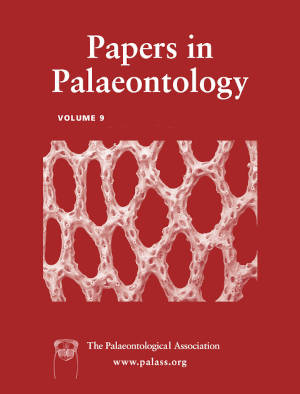Article: A micromorphological analysis of Bolonia lata Meunier from the Cretaceous of the Neuquén Basin (Patagonia, Argentina): new insights into the tracemaker
Publication: Papers in Palaeontology
Volume:
9
Part:
5
Publication Date:
2023
Article number:
e1522
Author(s):
Luciana M. Giachetti, Diana E. Fernández, Marcos Comerio, Carolina Gutiérrez, and Pablo J. Pazos
DOI:
10.1002/spp2.1522
Abstract
Abstract Polychaetes, echinoids and gastropods have been proposed as tracemakers for Bolonia Meunier, an elongate positive epirelief trace fossil characterized by two lobes composed of biserial, subtriangular pads and a mostly heart-shaped cross-section. Here, the internal structure and micromorphology of Bolonia are described for the first time using serial thin sections from shallow-marine Lower Cretaceous intervals of the Agrio Formation (Neuquén Basin, Argentina). In vertical thin sections, a conical structure of variable width extends centrally from the base to the top of the trace. In horizontal thin sections, grains are reoriented and reworked, forming a central zigzag structure. The organic matter and clays form grain aggregates representing the internal structure of individual pads of the trace fossil. The sediment has mostly been reoriented, with grains making up subcircular pods. We interpret the central conical structure as the collapse of the medial zone of the trace fossil, which could have destroyed drain tubes, especially in the absence of early cementation. Studying horizontal thin sections, we reconstruct the diagnostic biserial pads as biserial concave structures. These are interpreted as backfilling structures produced by the aboral and lateral spines of irregular echinoids, which worked together to compact the sediment anteroposteriorly and moved alternatively, explaining the zigzag pattern in the menisci. We propose Spatangoidea or Cassiduloidea (or a closely related group) with a similar burrowing ability and spine movement as tracemakers of these Bolonia specimens.
